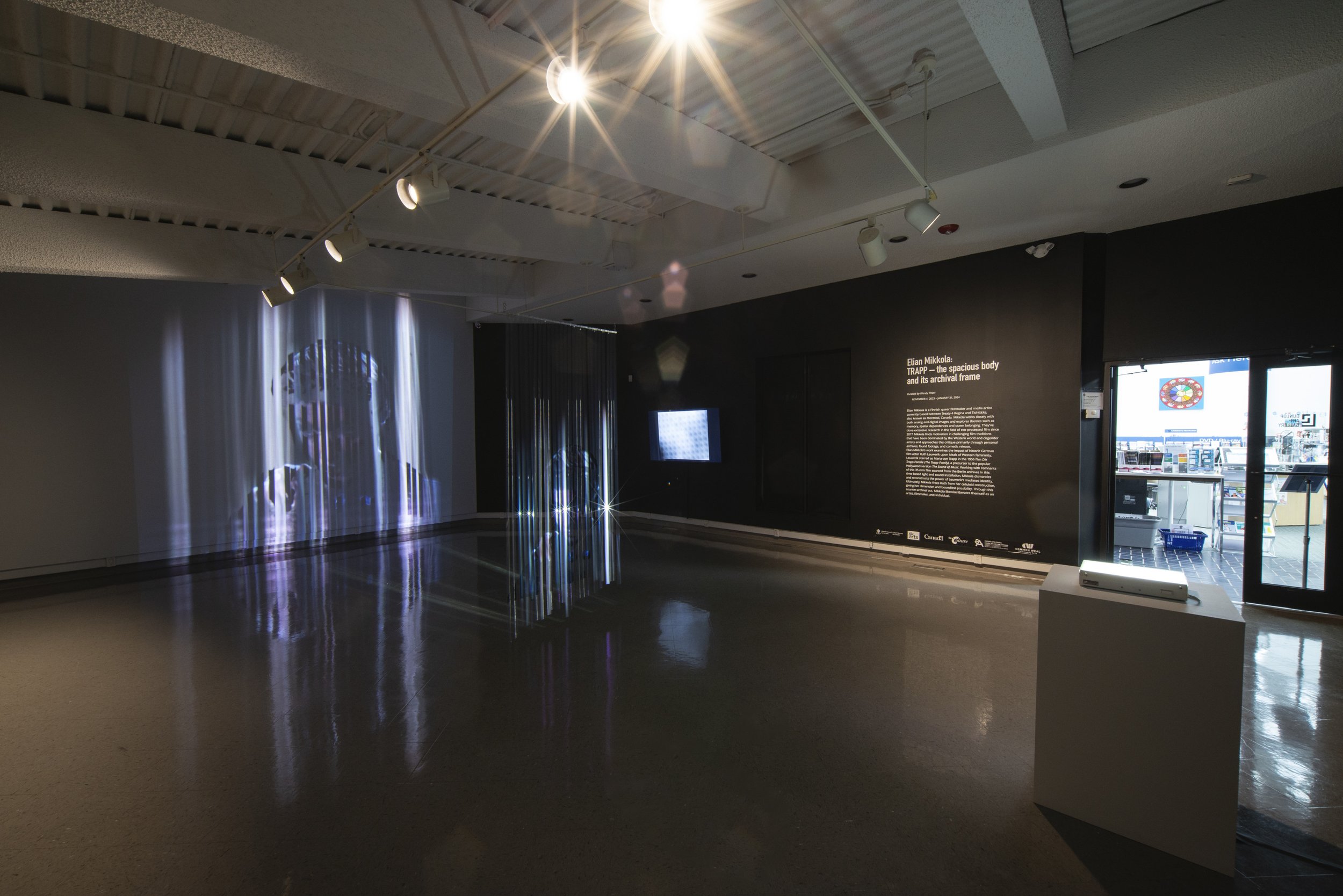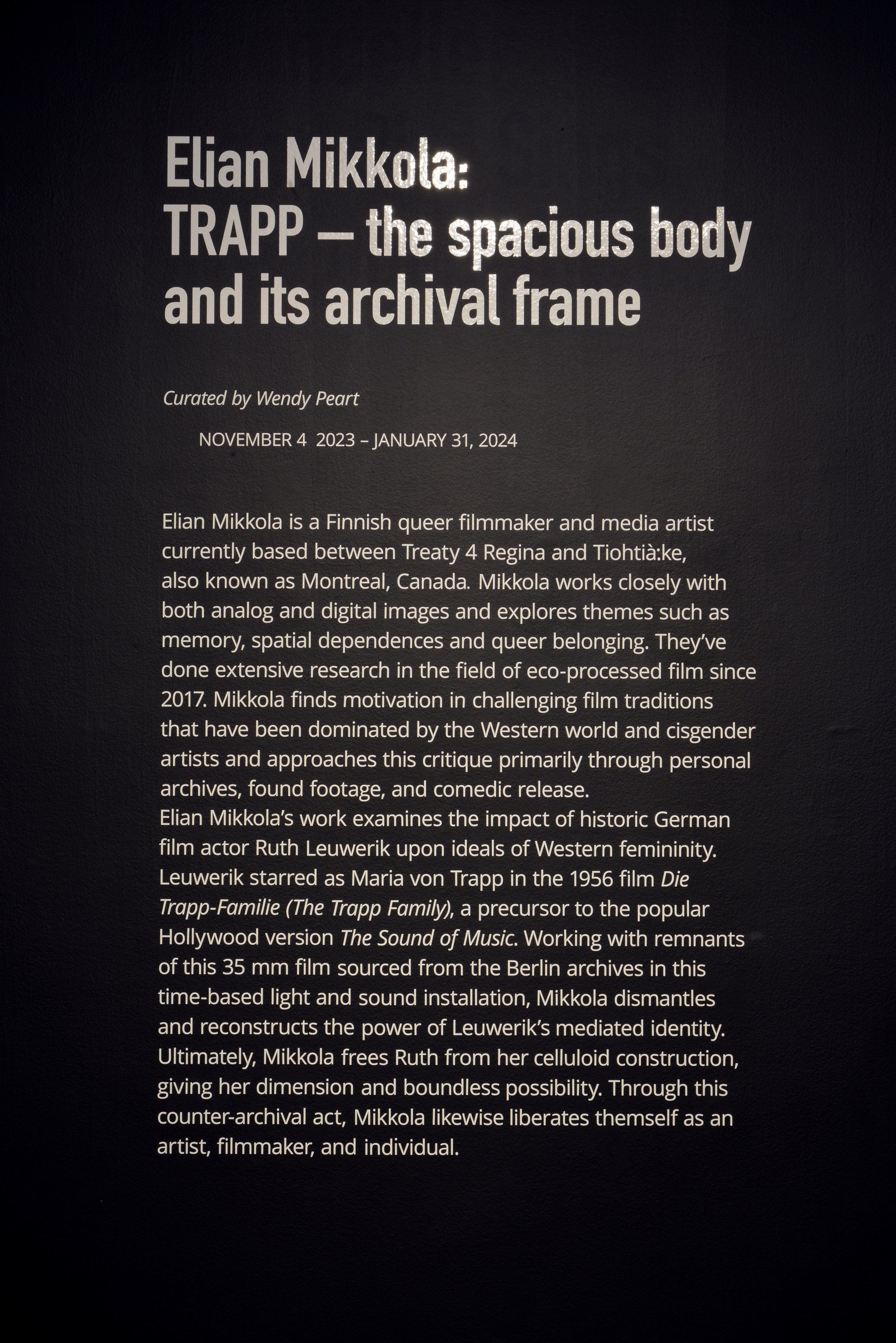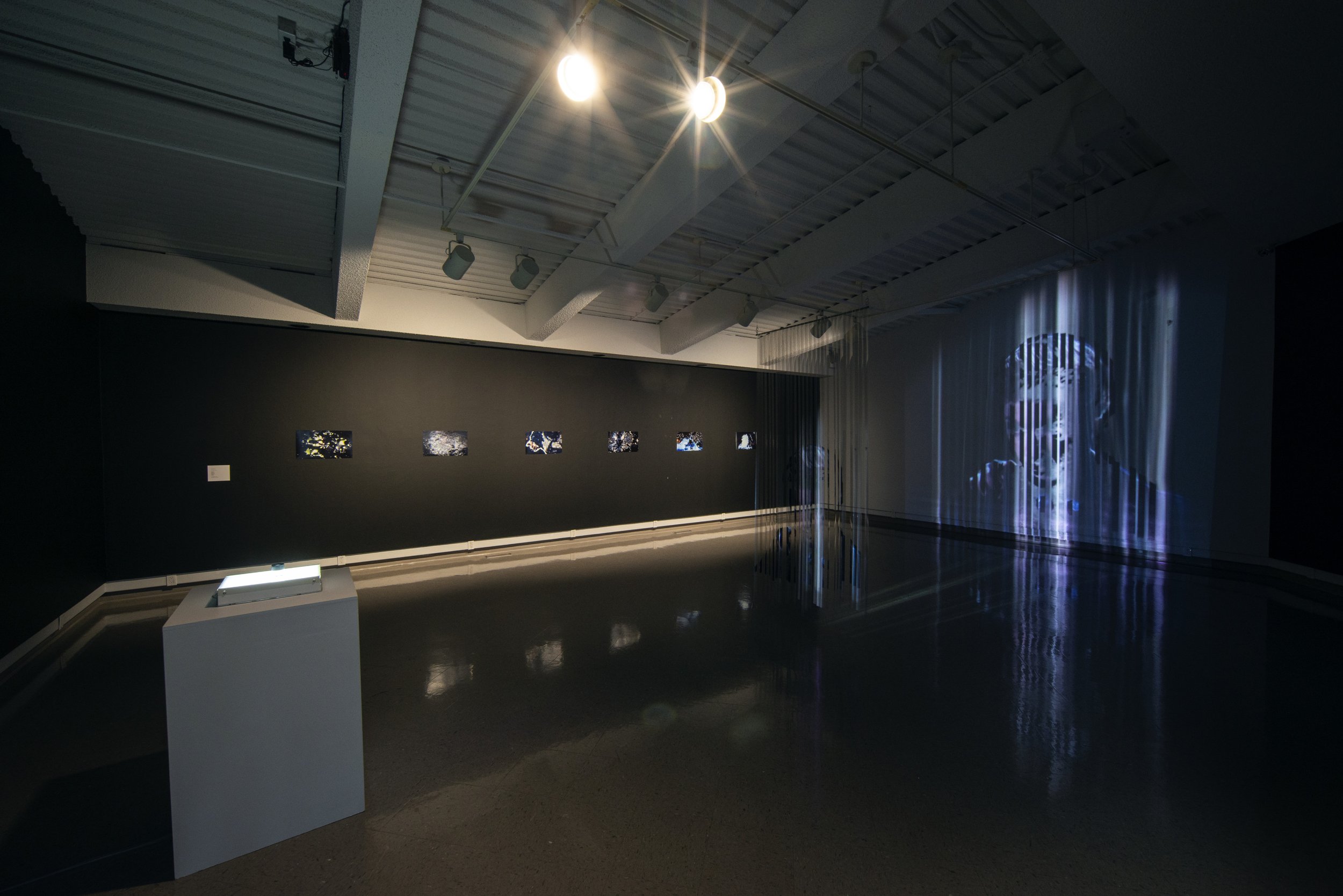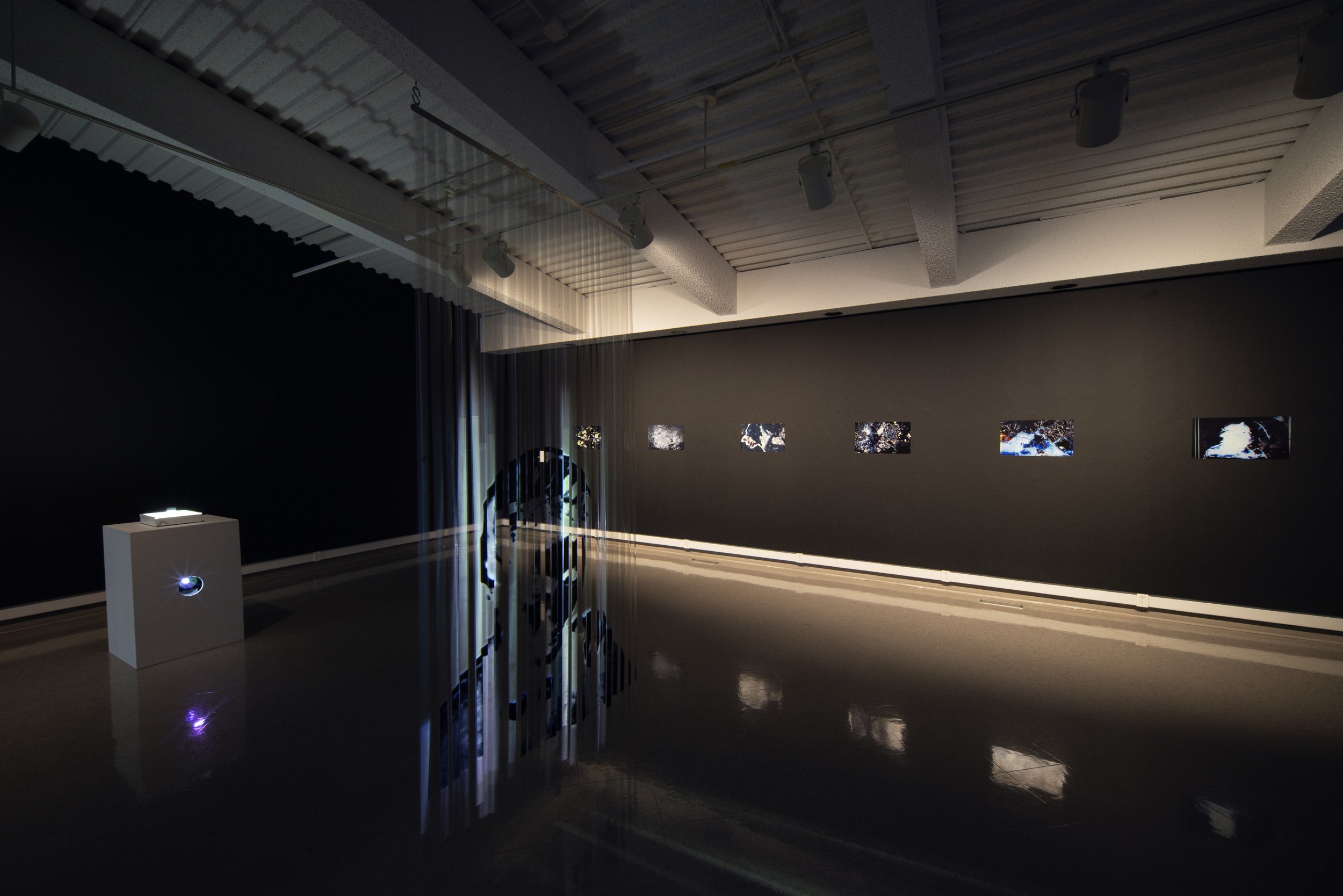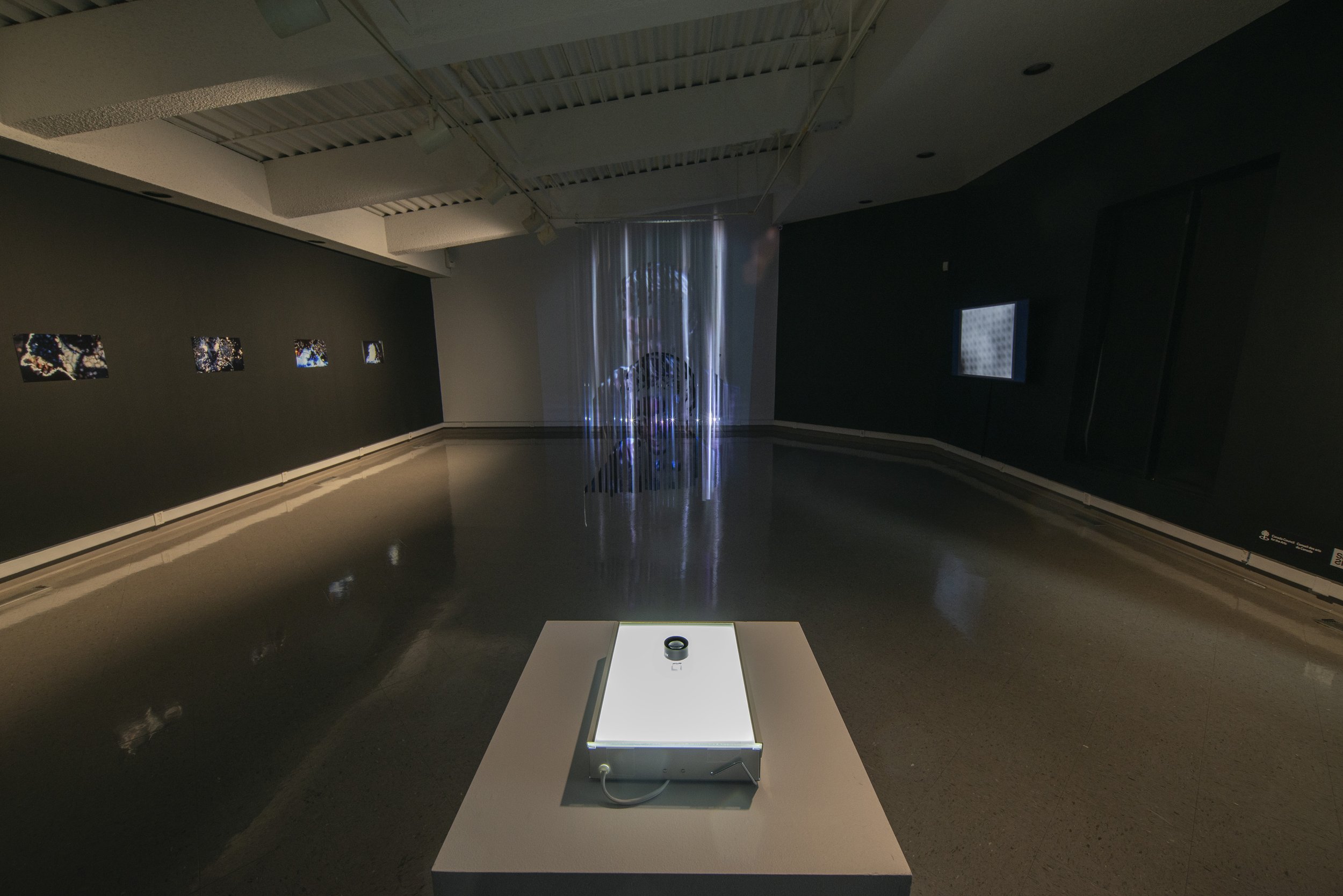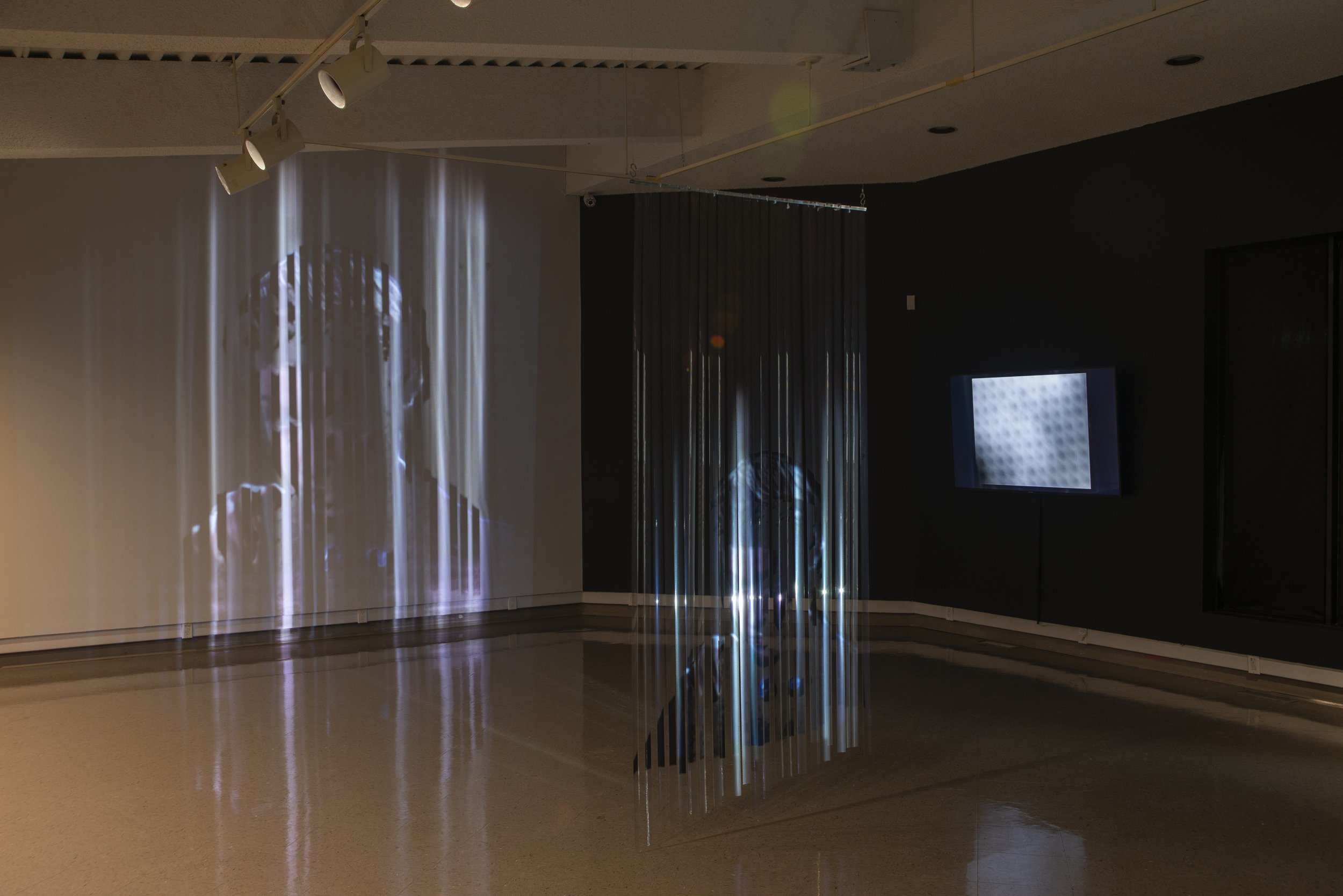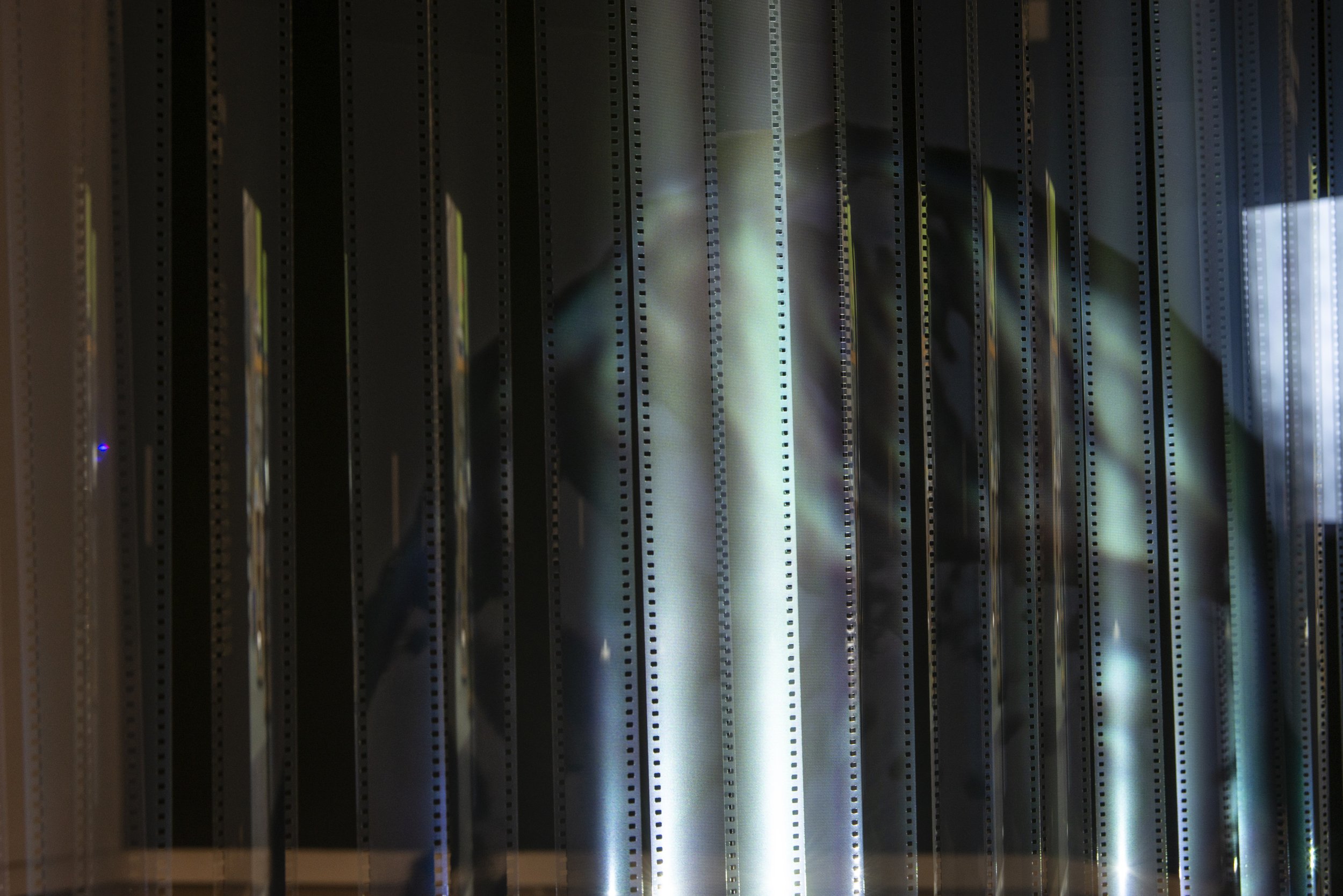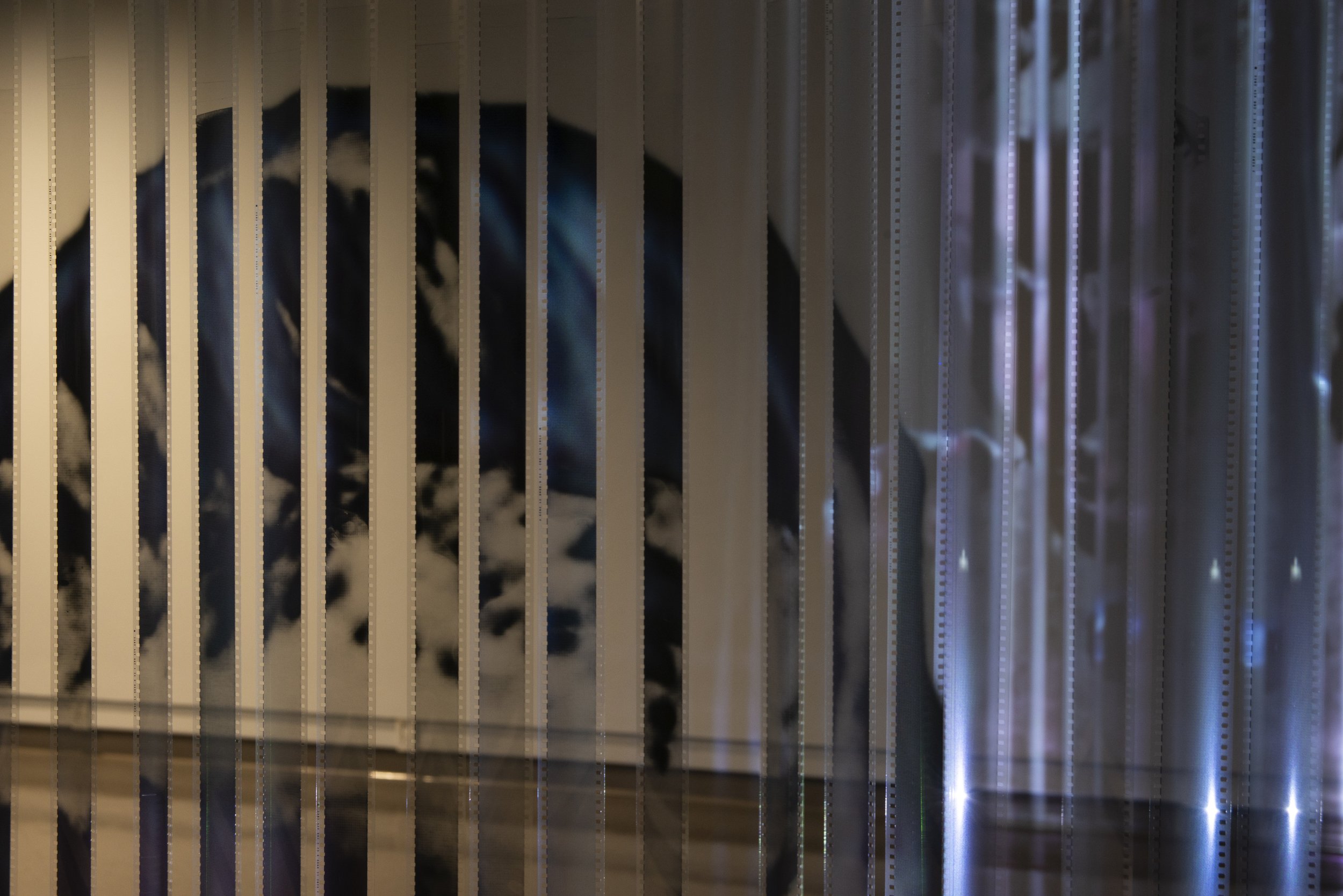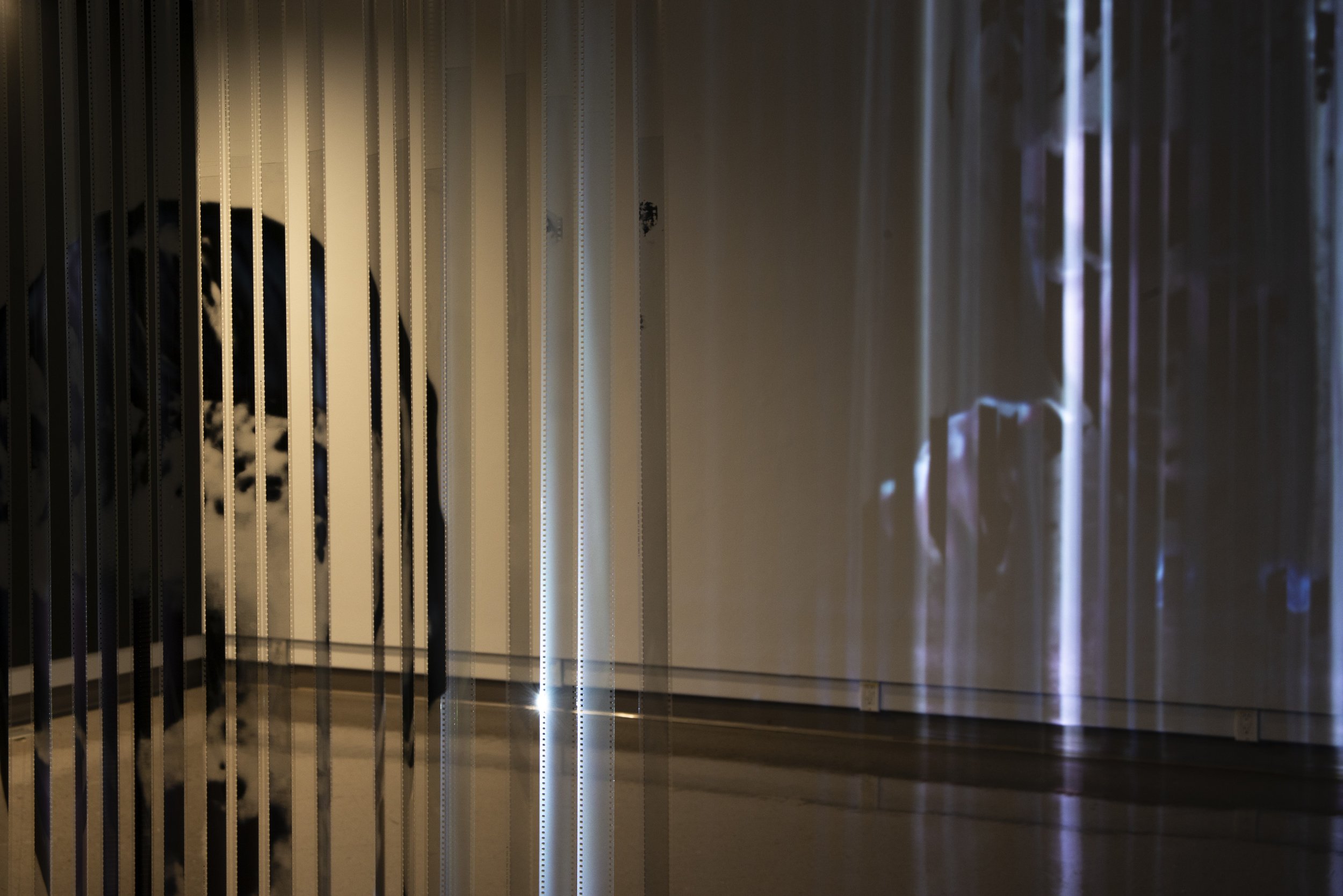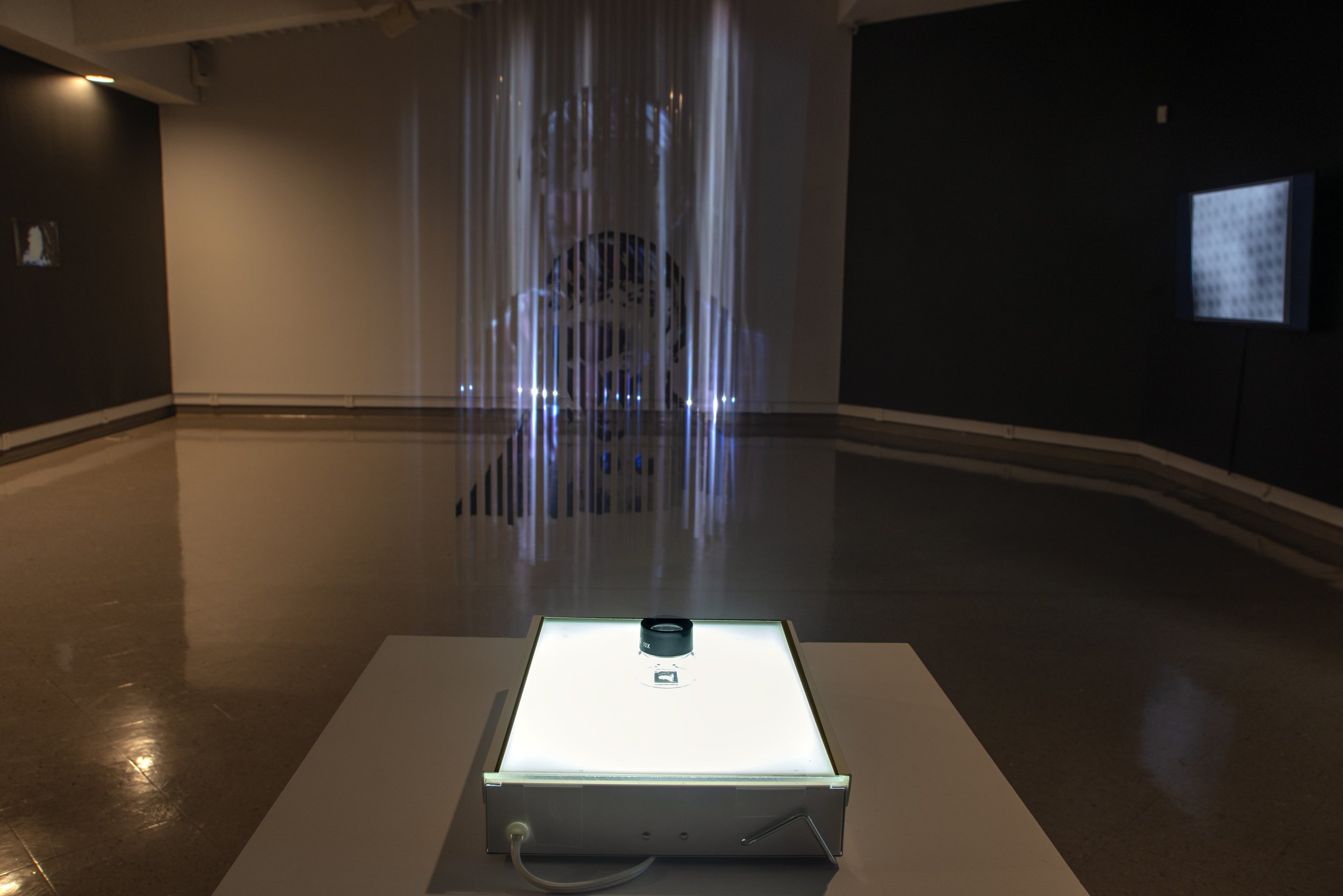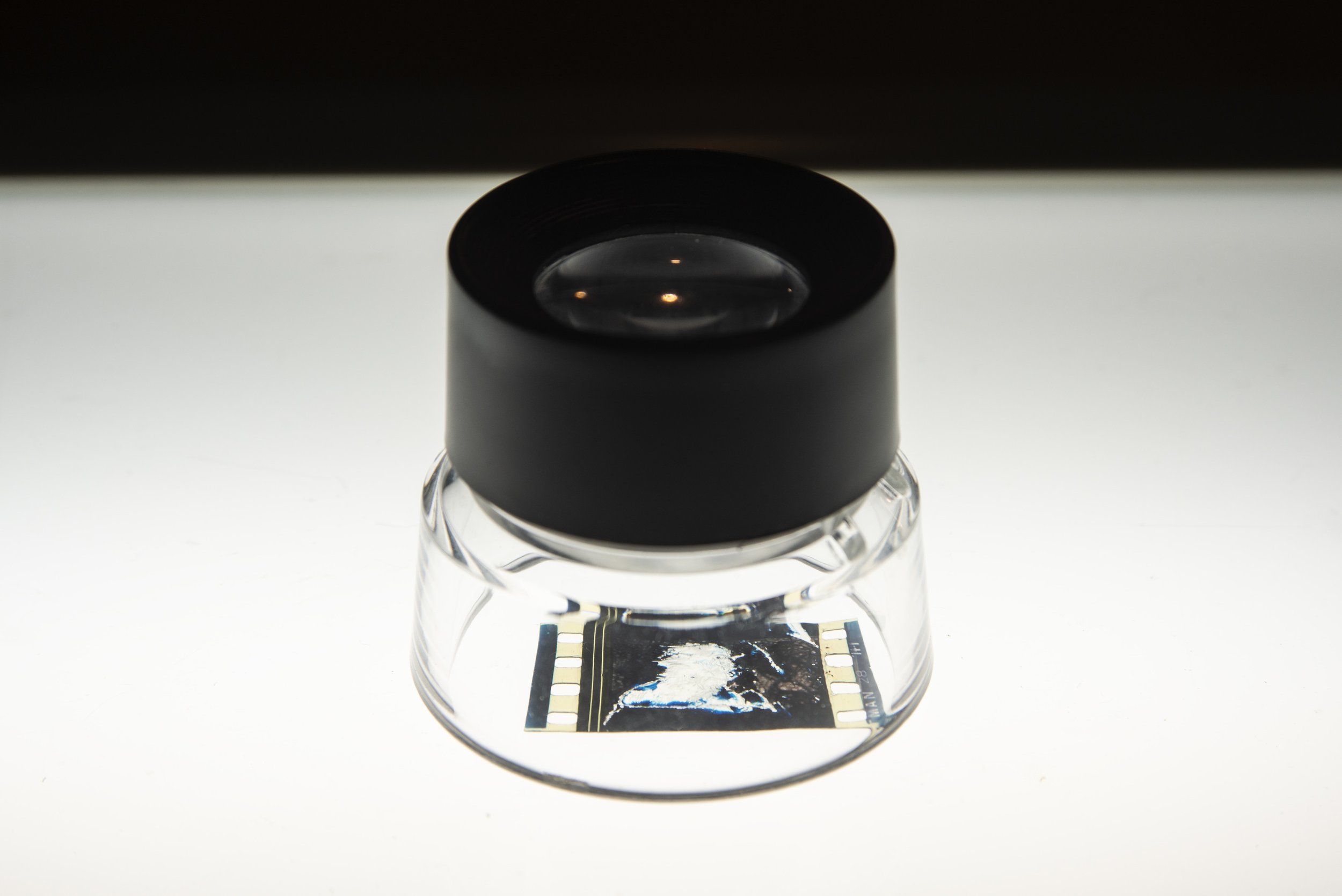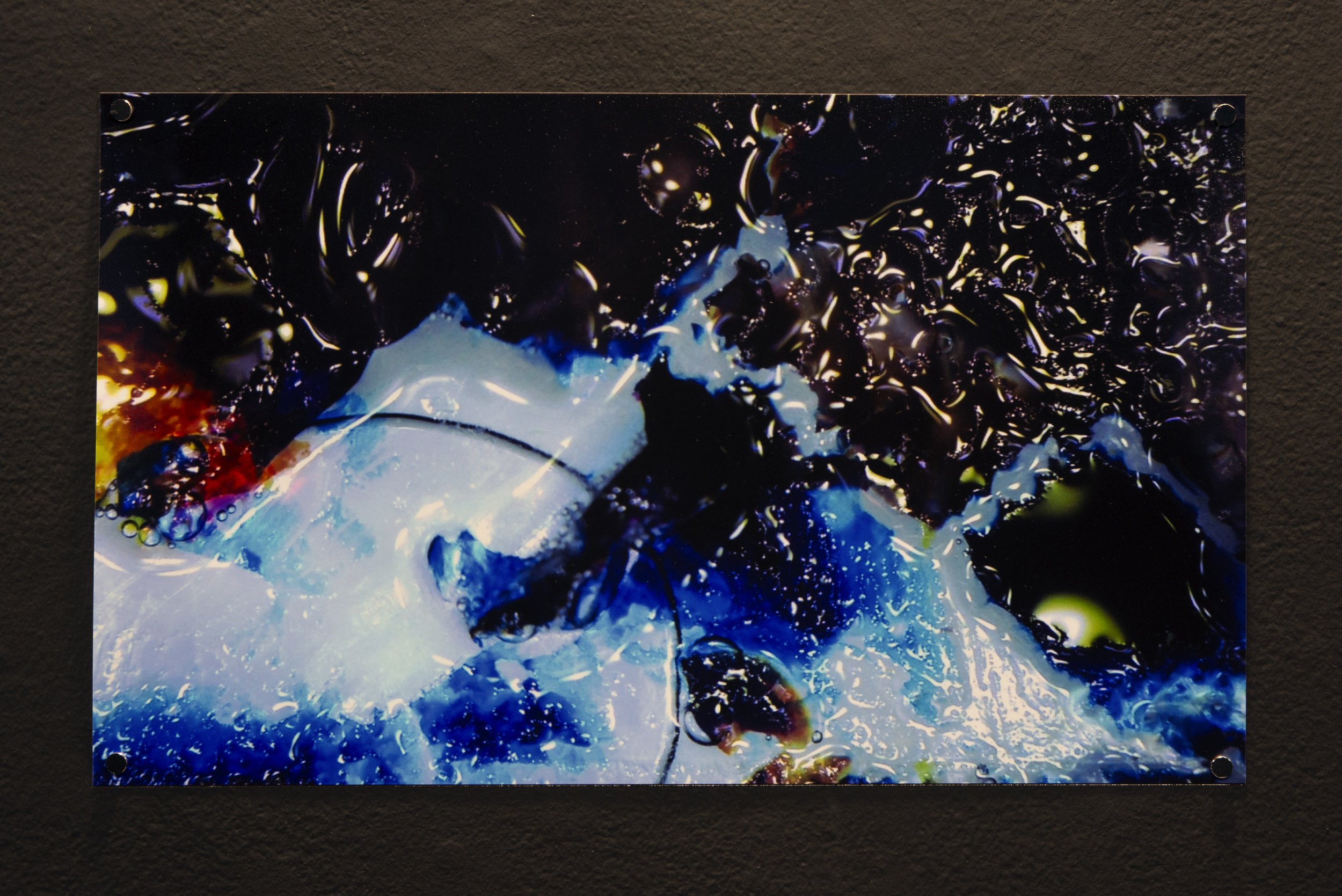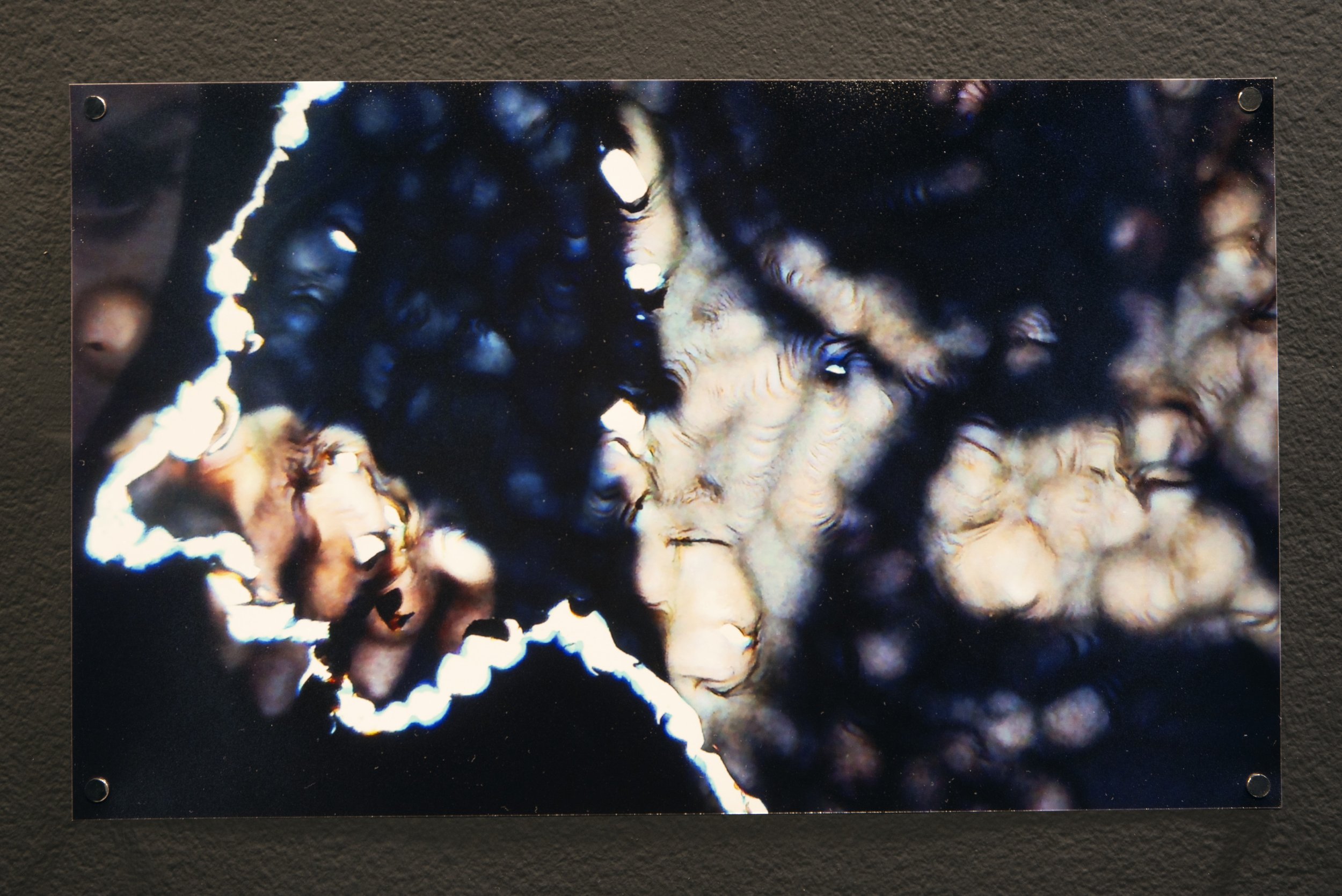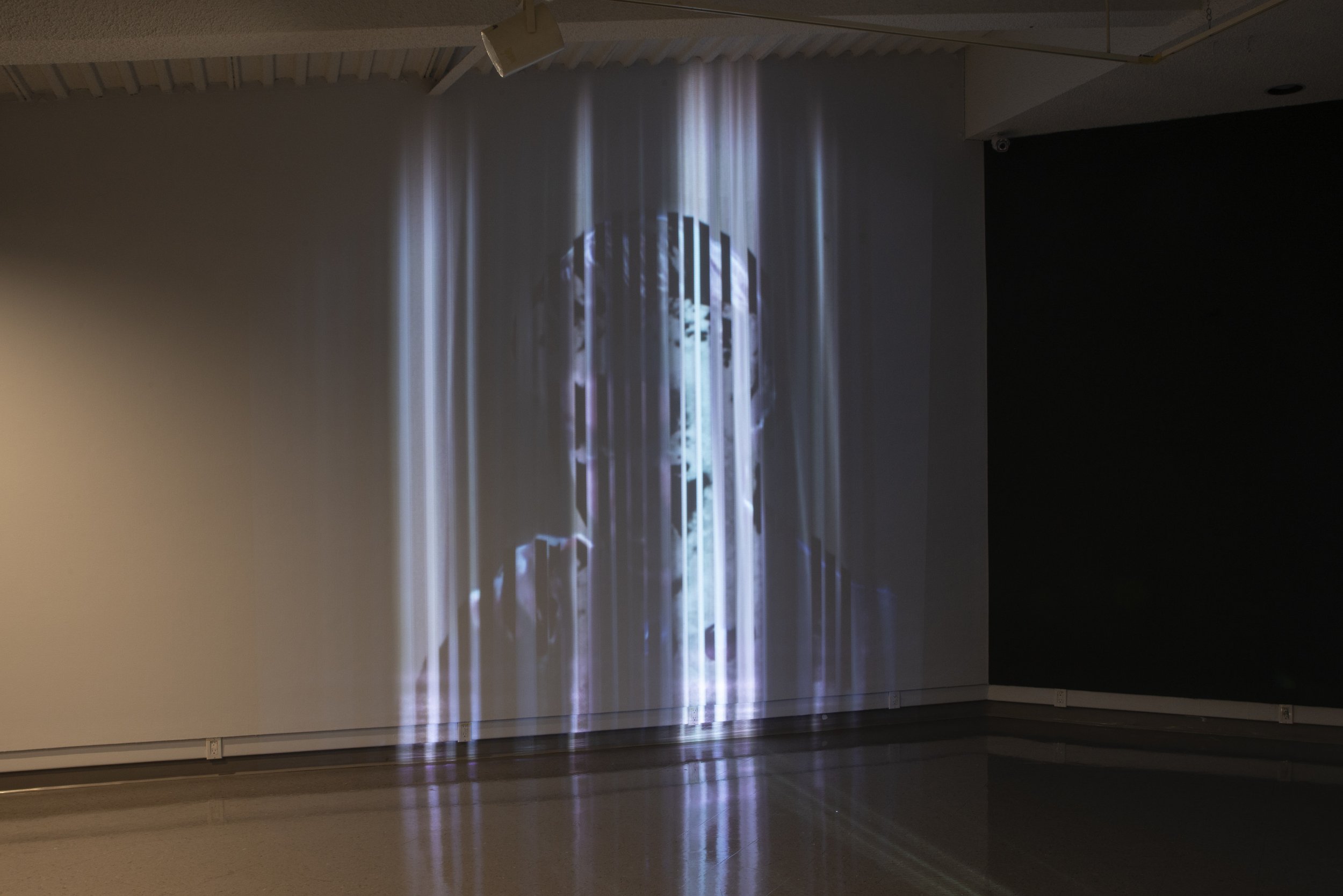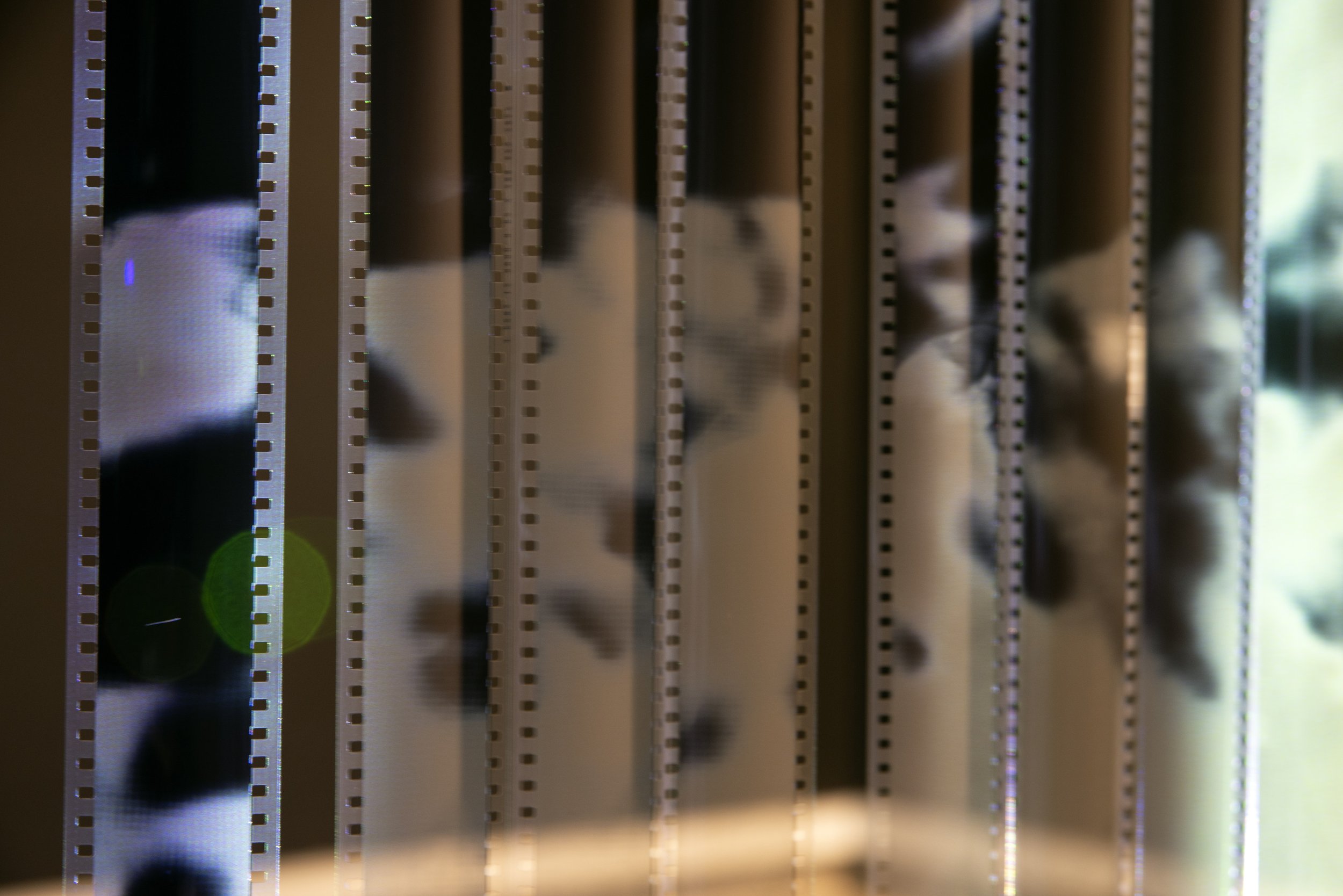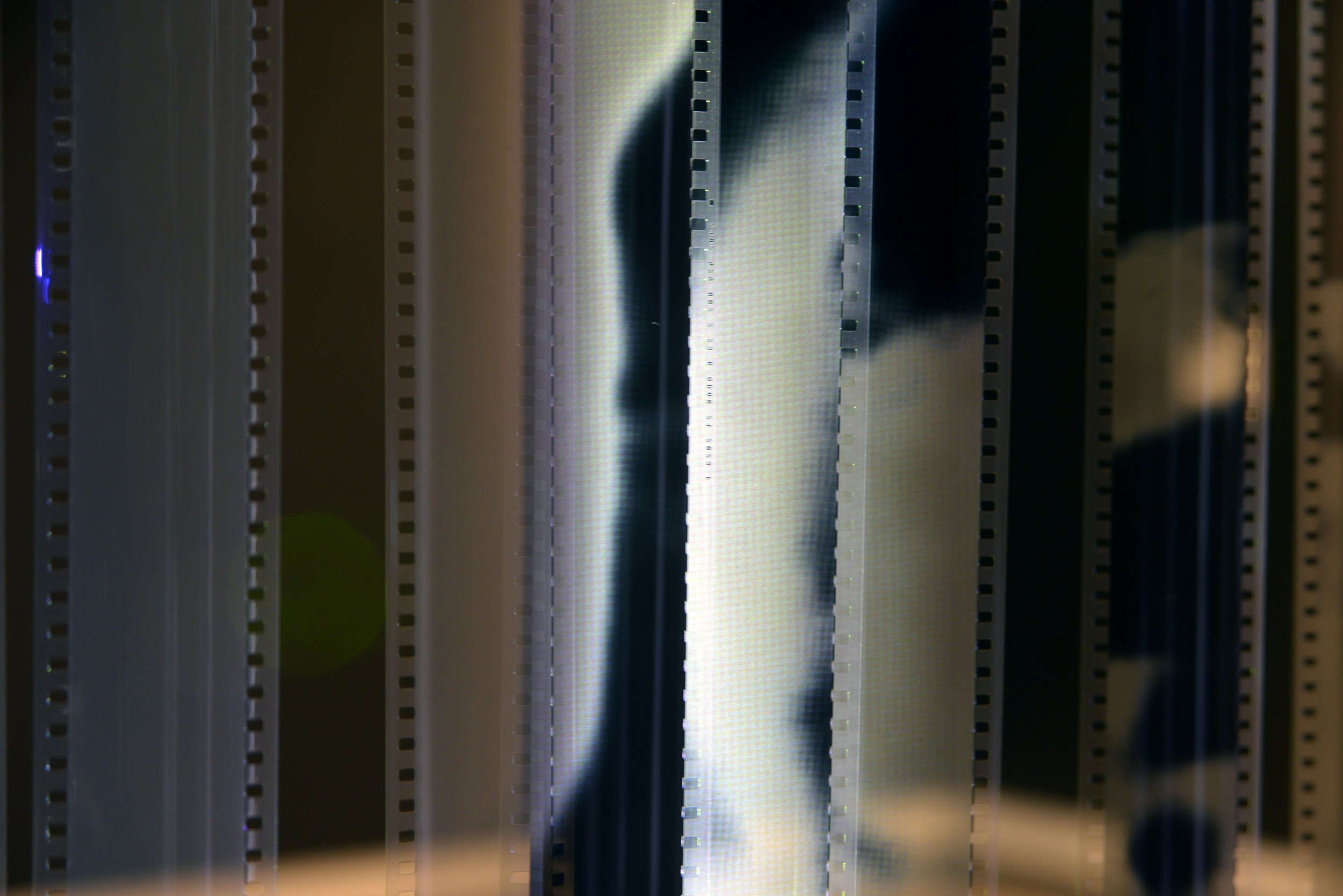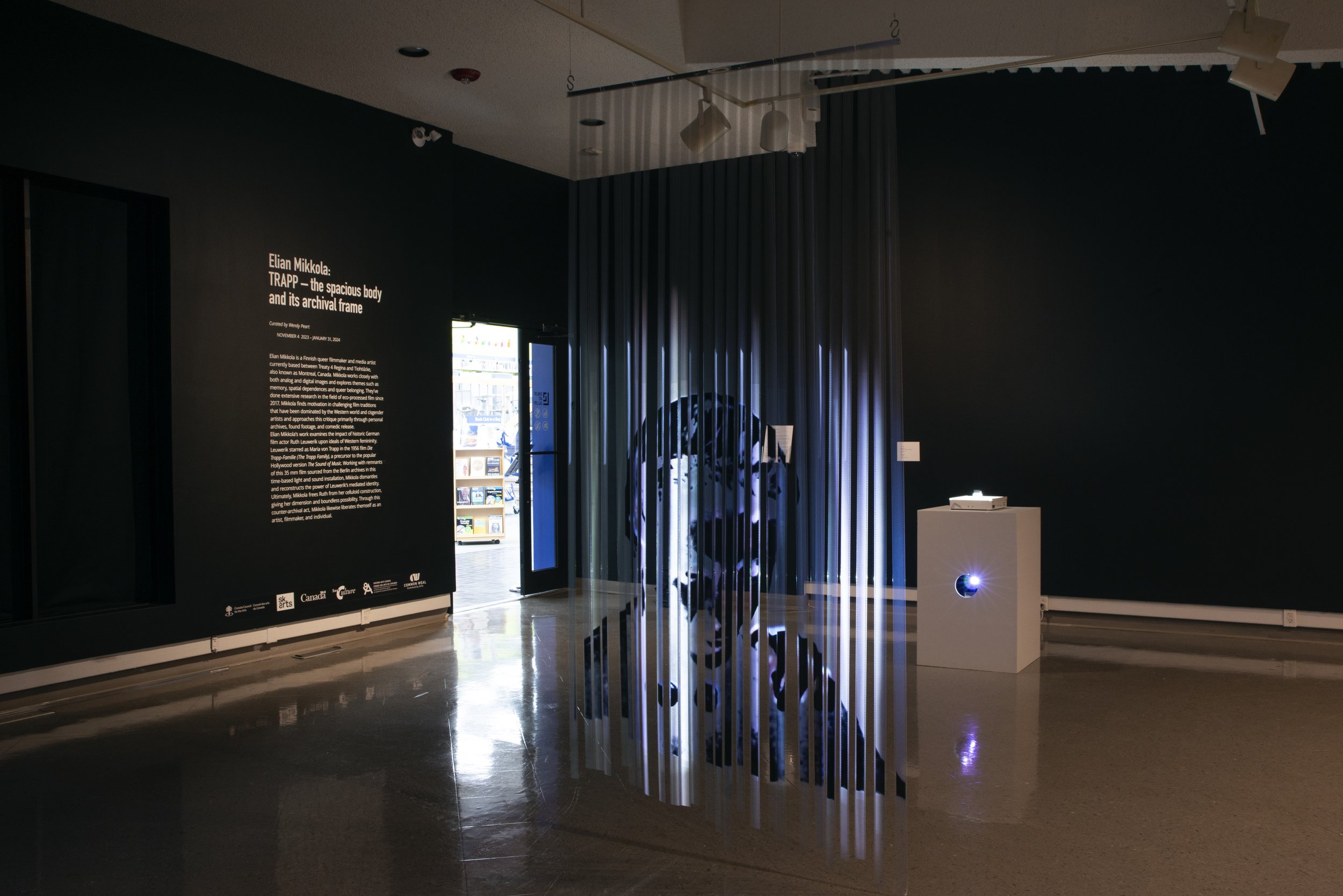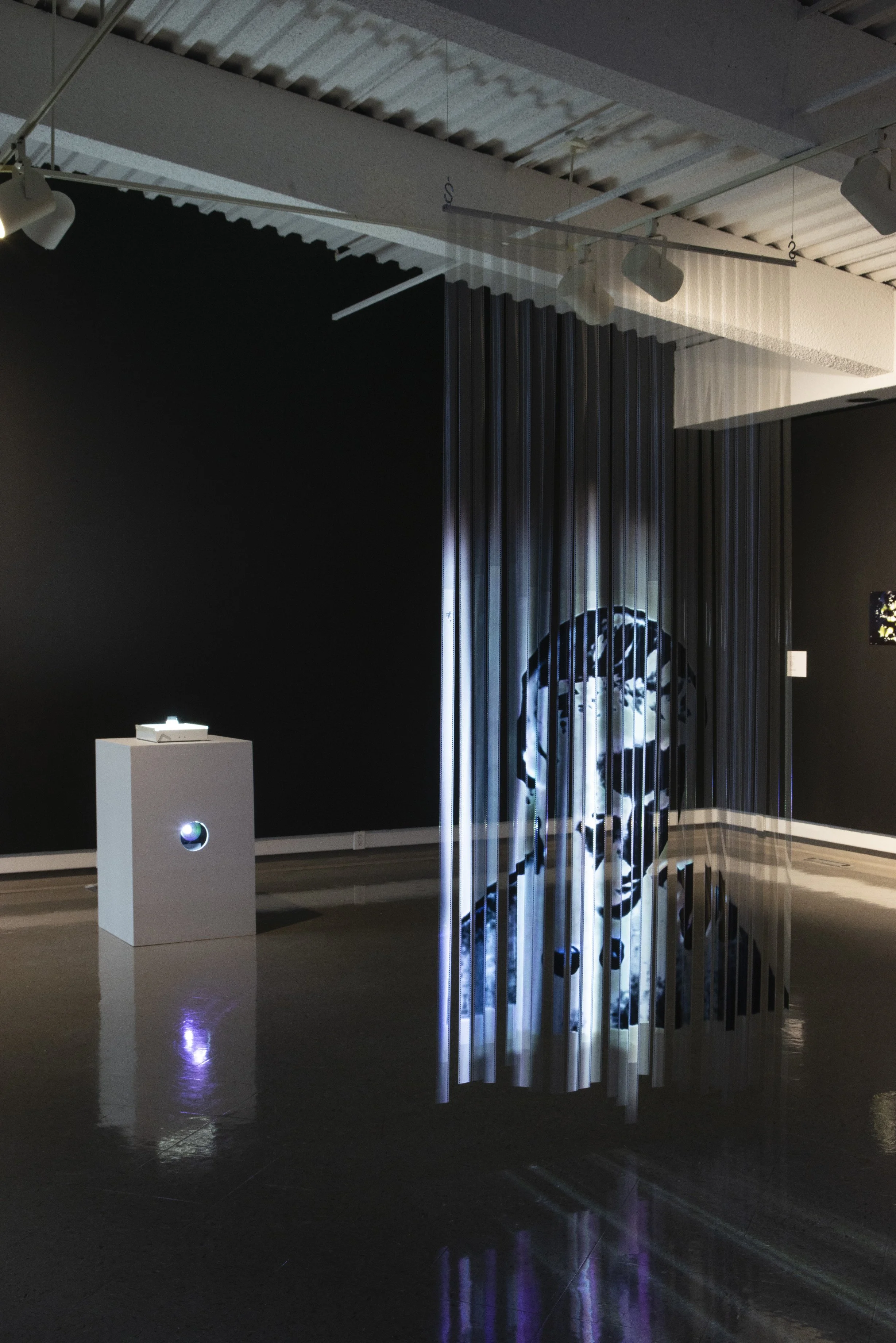Elian Mikkola, TRAPP (detail), mixed media, 2023.
Elian Mikkola’s work examines the impact of historic German film actor Ruth Leuwerik upon ideals of Western femininity. Leuwerik starred as Maria von Trapp in the 1956 film Die Trapp-Familie (The Trapp Family), a precursor to the popular Hollywood version The Sound of Music. Working with remnants of this 35 mm film sourced from the Berlin archives in this time-based light and sound installation, Mikkola dismantles and reconstructs the power of Leuwerik’s mediated identity. Ultimately, Mikkola frees Ruth from her celluloid construction, giving her dimension and boundless possibility. Through this counter-archival act, Mikkola likewise liberates themself as an artist, filmmaker, and individual.
Elian Mikkola is a Finnish queer filmmaker and media artist currently based between Treaty 4 Regina and Tiohtià:ke, also known as Montréal, Canada. Mikkola works closely with both analog and digital images and explores themes such as memory, spatial dependences and queer belonging. They’ve done extensive research in the field of eco-processed film since 2017. Mikkola finds motivation in challenging film traditions that have been dominated by the Western world and cisgender artists and approaches this critique primarily through personal archives, found footage, and comedic release.
Artist ↑
Elian Mikkola
Essay ↑
Expanding Realities: thoughts on Elian Mikkola’s Trapp
by Gary Varro
My/our works were/are always intended to be seen within the context of a social struggle, as an attack on state reality so as to destroy the limits of state reality and the traditional concept of art, for expanded cinema* also means expanded reality. - Valie Export
Like many of us, Elian Mikkola grew up watching The Sound of Music (1965) with Julie Andrews portraying a nun who marries as Maria Von Trapp, and after whom Mikkola titled their exhibition. As a child, it was one of Mikkola’s favourite films. “I learned to relate to her story and her gender conditioning without challenging it. I never questioned her positioning, her limited options and her oppression on screen before”.
It would be years later, when Mikkola discovered archival footage from the earlier iteration of The Sound of Music, the 1956 Die Trapp-Familie (The Trapp Family), that those sentiments shifted. Starring one of Germany’s most popular actors, Ruth Leuwerik - considered ‘the ideal German woman’ - it is Leuwerik’s portrayal of Maria Von Trapp and her status within German cinema and society that piqued Mikkola’s attention. Trapp is the result of Mikkola’s critical yet affectionate analysis of segments of this film, with a single image of Ruth Leuwerik taking centre stage, literally and figuratively.
As an artist who works within the context of expanded cinema and is invested in subverting history, deconstructing dominant realities, and having revised their own gender identity, Mikkola’s Trapp is an act of artistic experimentation, intervention, affection, self-care, and ultimately liberation for Maria, Ruth and themself.
Mikkola studied and uses one specific image from this film for exploration of ideas around release and liberation - Maria confronted with the life decision of remaining in service to the Catholic Church and God as a nun, or to marry a man and be in service to Baron Von Trapp and his seven children. In this frame, the Abbess (Mother Superior) is standing behind a seated Maria, her hand on Maria’s shoulder as gesture of guidance and support. Maria’s demeanour and emotional state in this single moment appears uncertain and conflicted - what is she going to do? She is on the precipice of a decision that will commit her to a world of prescribed servitude no matter what. Maria and Ruth are trapped and Mikkola is on a mission to rescue them both - to deliver them from the confines of their gendered expectation and conformity.
Conceptually, in the context of Mikkola’s concerns around trans-feminist liberation, the Abbess’ hand on Maria’s/Ruth’s shoulder might suggest further notions around institutional control and systemic oppression, or additionally/conversely, the physicality and intimate nature of hand processed film - the hand of the artist who manipulates existing meaning to bring forth a critical and analytical awakening.
Further examples of conceptual dimensionality in Trapp is the use of 35mm film strips, several feet long, from Die Trapp-Familie, suspended vertically, side by side in the middle of the gallery. These strips of celluloid become the ‘screen’ onto which is cast the image of Maria/Ruth, which in turn becomes a meta moment - the materiality and mechanics of analog film writ large. This celluloid screen receives the light from a digital projector underscoring concepts of illumination, enlightenment, luminosity, and revision. Accentuating the reality of Maria’s and Ruth’s turmoil and entrapment by appearing as bars of a jail cell/cage, the projection of light directly onto and through the narratives contained in the strips releases Maria/Ruth.
As hanging strips of celluloid, the screen doubles as a curtain - concealing, obscuring and implying ideas around the private and public realms as they relate to identity and safety. As an immersive experience, viewers are welcome to walk through this ‘curtain’ - their movement activating a playful disruption - unknowingly implicating and involving them in meaning-making. The strips and the viewer’s body cast kinetic shadows onto the wall in front of them, as the image of Maria/Ruth is momentary fractured and set free. Concurrently, other elements such as altered audio from Die Trapp-Familie and deteriorated images of Maria/Ruth in print form surround and accompany the installation. Utilizing distorted audio and progressively dissolving/destructed images of Maria/Ruth, these elements provide further evidence of the process of liberation.
Embracing the ideals and dimensions of expanded cinema, Mikkola’s installation Trapp uses a mix of analog and digital processes and multi-narratives/perspectives to convey the complexities of rethinking and examination; embodies the codes of expanded cinema’s refusal of limitation; and opens up a dialogue to refute prescribed social conditioning. As such, Mikkola creates a new, expanded and revised reality of the archived position of both Maria Von Trapp and Ruth Leuwerik.
Gary Varro is a curator and visual artist based in Regina, Saskatchewan, Canada where in 1996 he established and continues to present Queer City Cinema Festival and Performatorium Festival of Queer Performance. Since the mid 90’s, Gary Varro’s visual art practice has proposed critical relationships with the architectural and social spaces they occupy and reference. Areas of interest include: queer identities; public/private domains; self-humiliation and vulnerability; spectacle and transgression; humour and pathos, endurance and the creative process itself.
••••••••••••••••••••••••••••••••••••••••••••••••••••••••••••••••••••••••••••••••••••••••
* There’s a passive drama to expanded cinema - using time-based visuals in places that may be surprising and unexpected. It is this unexpectedness that makes it both compelling and delightful. It stimulates the eye and often other senses to create fantastical and explorative experiences. It transports in its use of light, image and sound. The viewing experience can be dynamic, mesmerizing, active, private and often intimate, taking place in typically darkened spaces. Below are links of notable examples of and texts relating to Expanded Cinema:
https://www.sensesofcinema.com/2003/peter-tscherkassky-the-austrian-avant-garde/expanded_cinema/
https://filmtheoryfilmtheory.wordpress.com/2018/07/24/2/
https://filmtheoryfilmtheory.files.wordpress.com/2018/07/introduction-script.pdf
Installation Images ↑
Photos by Don Hall
